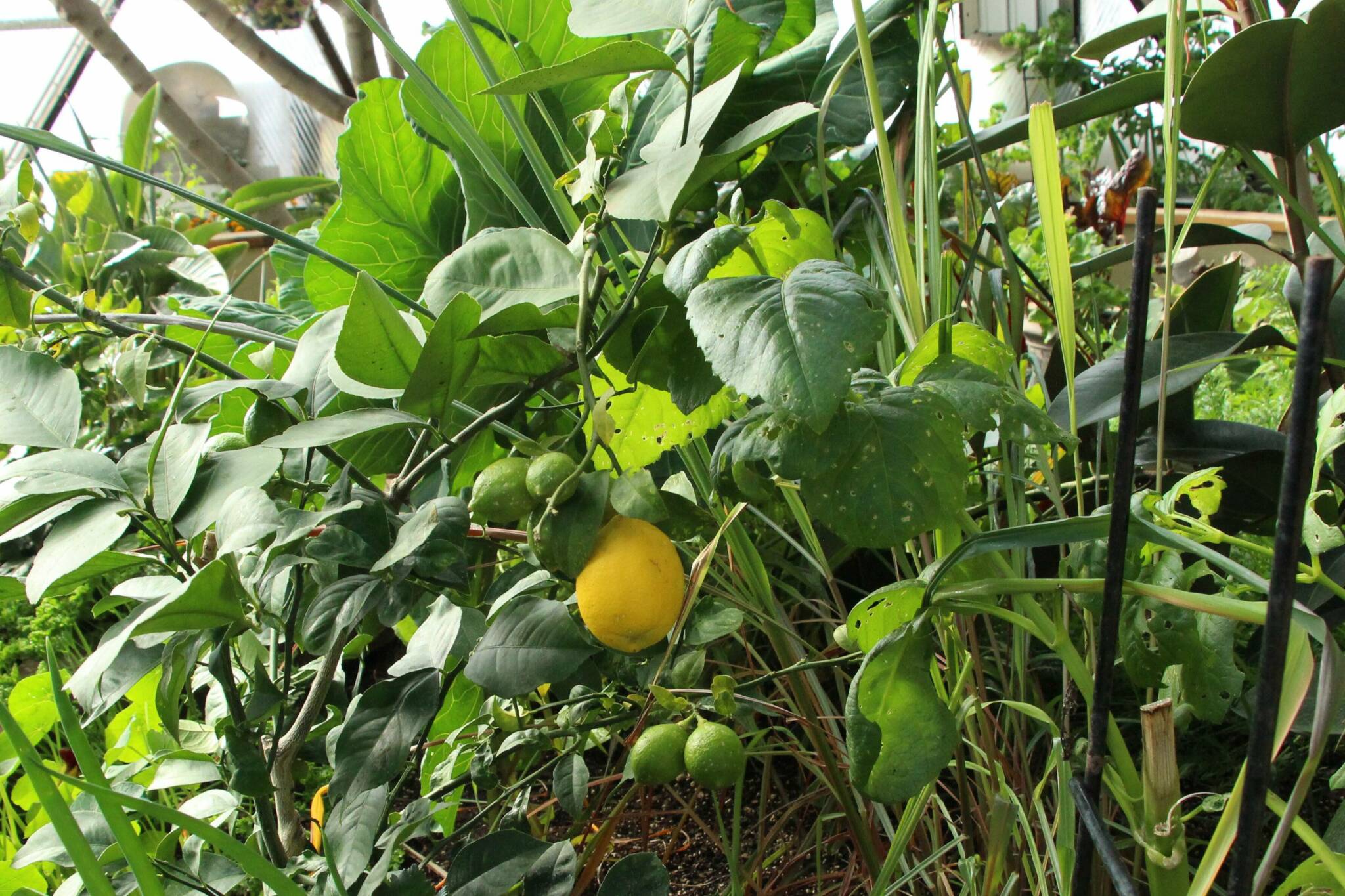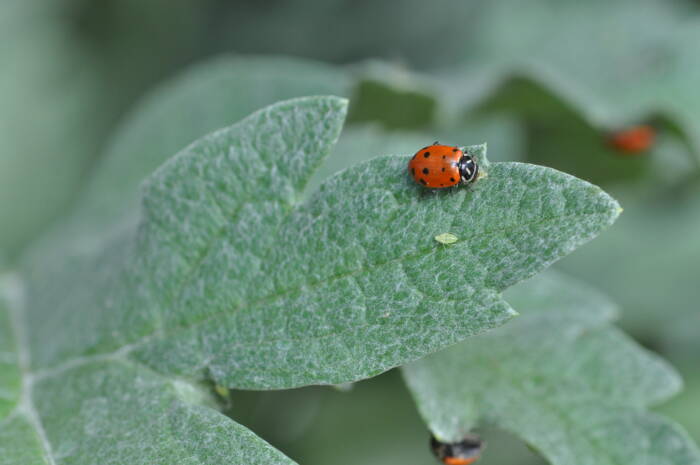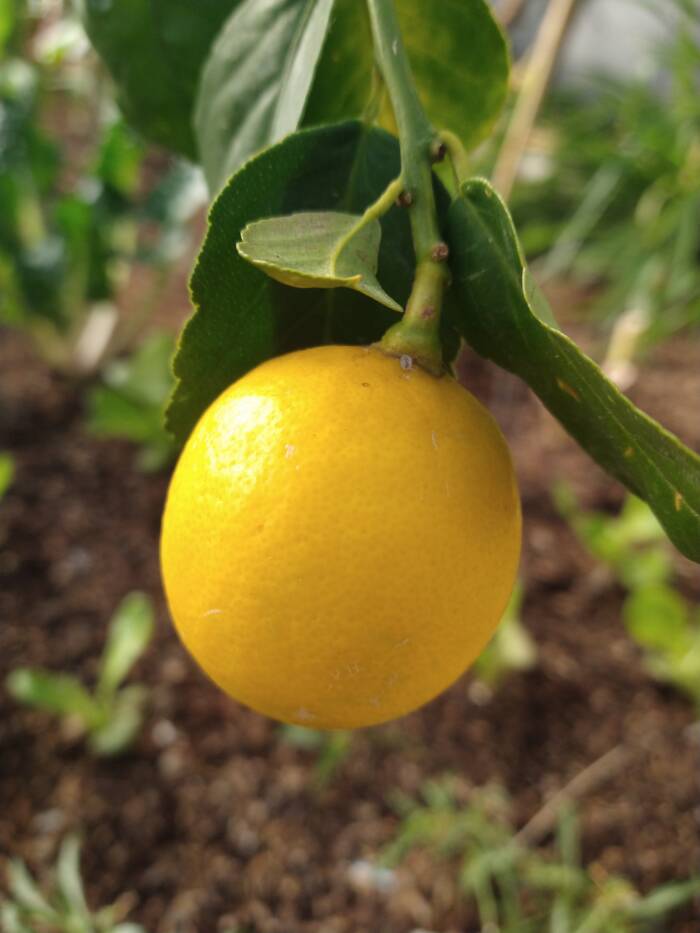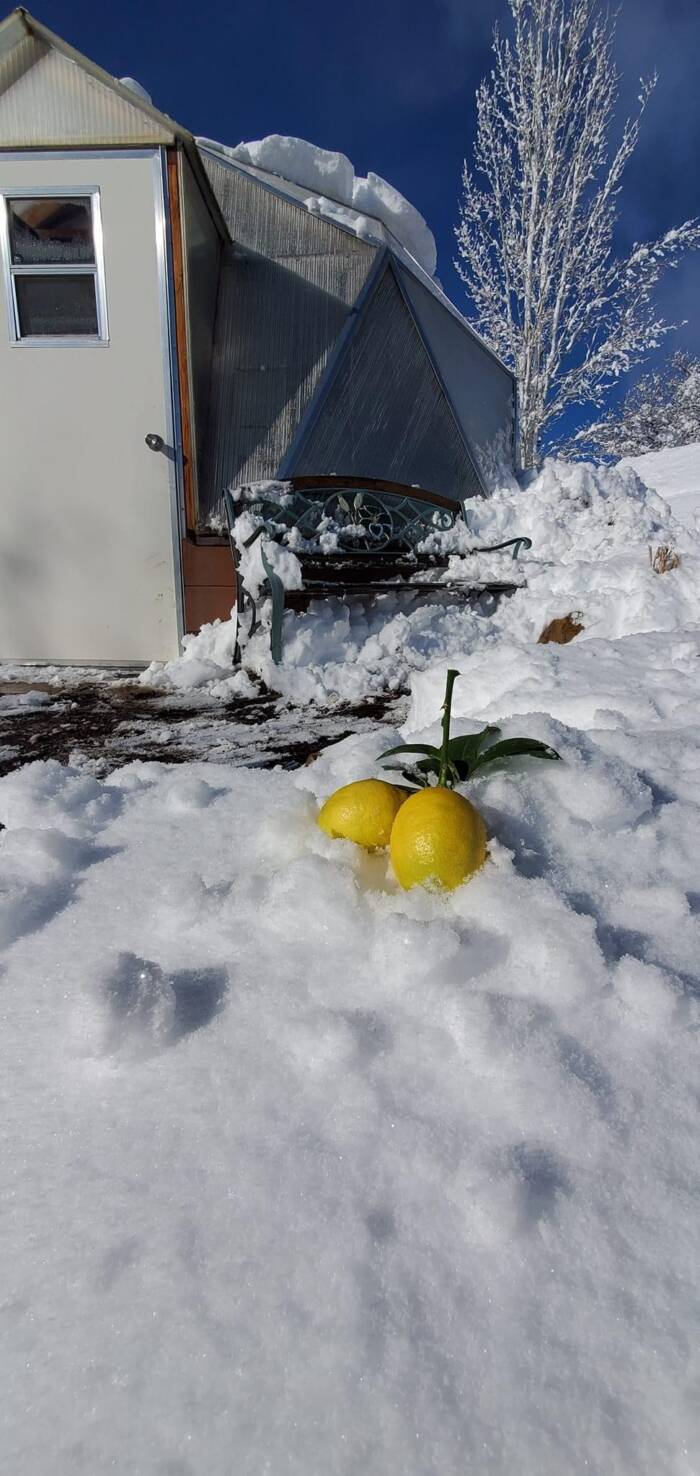Meyer Lemon Tree Companion Plants: Your Ultimate Guide to a Thriving Citrus Garden
Hey there, fellow garden enthusiasts! If you’ve got a Meyer lemon tree in your yard, or you’re thinkin’ about getting one, you’re in for a real treat. These trees ain’t just gorgeous with their glossy leaves and sweet, juicy lemons—they’re also a fantastic centerpiece for a kickass garden ecosystem. But here’s the secret sauce: pairing your Meyer lemon tree with the right companion plants can take it from “pretty good” to “holy cow, look at that harvest!”
At our lil’ gardening crew, we’ve seen firsthand how companion planting works wonders. So, let’s dive deep into what Meyer lemon tree companion plants are all about, why they matter, and which ones you should buddy up with your citrus star. We’ll keep this simple, practical, and loaded with tips you can use right now to make your garden pop.
What’s Companion Planting, and Why Should I Care?
Companion planting is basically playin’ matchmaker with your plants. It’s about putting different species together so they help each other out—kinda like besties in the garden. For your Meyer lemon tree this means picking plants that boost its growth, keep pests at bay attract pollinators like bees, or even improve the soil. It’s a natural, eco-friendly way to get more fruit and less hassle.
Why does this matter for Meyer lemons? Well, these trees thrive in warm climates with full sun, and they’ve got specific needs—good drainage, protection from bugs, and plenty of pollination for those juicy lemons. The right companions can handle a lotta these needs without you breaking out the chemical sprays or fussin’ too much. Plus, it makes your garden look like a freakin’ masterpiece with all the colors and textures mixin’ together.
Top Benefits of Companion Plants for Meyer Lemon Trees
Before we get into the specific plants. let’s break down why companion planting is a game-changer for your Meyer lemon tree
- Attracts Pollinators: Flowers and herbs draw in bees and butterflies, which are crucial for fruit production. More pollination = more lemons, y’all!
- Deters Pests Naturally: Some plants give off scents that bugs hate, protecting your tree without harsh pesticides.
- Boosts Soil Health: Certain companions add nutrients like nitrogen or improve soil structure, feedin’ your tree better.
- Suppresses Weeds: Dense groundcovers stop weeds from stealin’ water and nutrients from your lemon tree.
- Enhances Flavor: Believe it or not, some plants can even make your lemons taste a bit zestier through chemical interactions in the soil.
Now that you’ve got the “why,” let’s get to the “who”—the best plants to pair with your Meyer lemon tree.
Best Meyer Lemon Tree Companion Plants
We’ve rounded up the top picks for companions based on what works best with Meyer lemons’ needs—full sun, well-drained soil, and warm vibes. I’ve split ‘em into categories for herbs, flowers, veggies, and groundcovers so you can mix and match based on your garden goals.
Herbs: Flavorful Protectors
Herbs are like the Swiss Army knife of companion plants—they’re useful in the kitchen and in the garden. Here’s some of the best to plant near your Meyer lemon tree:
- Basil: This stuff is a pest-repelling champ. It keeps aphids, whiteflies, and spider mites away with its strong smell. Plus, basil loves the same sunny, well-drained conditions as your lemon tree. I’ve tossed some basil near my citrus before, and dang, the bug problems just dropped off!
- Oregano: Another herb with a punchy scent, oregano scares off harmful insects while attracting helpful ones. Its flowers bring in pollinators too.
- Rosemary: This hardy herb don’t need much water, which is perfect for a low-maintenance setup. It deters pests and looks stunning with its needle-like leaves next to your lemon tree’s greenery. And hey, it pairs awesome with lemon in recipes!
- Thyme: With its fragrant oils, thyme keeps pests like cabbage worms at bay and attracts bees with its tiny flowers. It’s tough as nails in drought or cold, so it won’t wimp out on ya.
- Cilantro: Great for repelling spider mites, cilantro also adds a zing to your kitchen game while supporting your tree.
- Dill: This one invites beneficial insects that munch on common lemon tree pests. It’s like hiring a tiny army for protection.
- Mint: Masks the scent of your tree from pests and spreads as a groundcover. Just watch out—it can take over, so maybe pop it in a pot nearby.
Flowers: Beauty with Benefits
Flowers ain’t just for looks; they’re workhorses in the garden They attract pollinators and often deter pests Here’s the ones I swear by for Meyer lemon trees
- Marigolds: These bright blooms are like a superhero underground, repelling nematodes that can harm your tree’s roots. Above ground, they draw in ladybugs and other good bugs to eat pests. I’ve planted marigolds around my citrus patch, and it’s like a bug-free zone now!
- Nasturtiums: Their vibrant flowers attract aphids away from your tree (yep, they’re a decoy) and bring in pollinators. Plus, you can eat the leaves and blooms for a peppery kick in salads. How cool is that?
- Lavender: Not only does lavender smell amazing, but it also keeps mosquitoes and ants away while pulling in bees and butterflies. Its purple hues look dope next to yellow lemons.
- Calendula: With cheery yellow flowers, calendula deters aphids and other pests while adding a pop of color.
- Zinnias: These attract butterflies and repel whiteflies, making ‘em a double win for pollination and pest control.
- Sunflowers: Big and bold, sunflowers invite pollinators and beneficial insects. Just make sure they don’t shade your lemon tree too much.
- Borage: This lesser-known flower improves soil health and attracts bees like nobody’s business. It’s a quiet MVP in any citrus garden.
Vegetables & Fruits: Edible Allies
Why not make your garden a full-on food factory? Some veggies and fruits play nice with Meyer lemons and offer extra perks:
- Bell Peppers: These repel aphids and thrive in similar sunny conditions. They’re a tasty addition too!
- Tomatoes: Their scent keeps pests away, and they don’t mind the warm vibes Meyer lemons love.
- Bush Beans: These little guys add nitrogen to the soil, feeding your lemon tree naturally.
- Radishes: They deter cucumber beetles and other pests without competing too much for space.
- Strawberries: With shallow roots, strawberries don’t fight for nutrients and act as a living mulch to keep weeds down.
Groundcovers: Weed Warriors
Groundcovers are awesome for filling in space under your Meyer lemon tree, preventing weeds, and sometimes deterring pests:
- Creeping Thyme: Its flowers attract pollinators, and it spreads to choke out weeds. Plus, it smells heavenly.
- Lemon Balm: This spreads fast to cover bare soil and keeps weeds at bay. It’s got a citrusy scent that vibes with your lemon tree.
- Strawberries (again!): As mentioned, they’re great as a groundcover with the bonus of sweet fruit.
Here’s a quick table to sum up some top companions and their main perks:
| Plant | Type | Main Benefit | Bonus |
|---|---|---|---|
| Basil | Herb | Repels aphids, whiteflies | Culinary use |
| Marigolds | Flower | Deters nematodes, attracts ladybugs | Bright visual appeal |
| Nasturtiums | Flower | Attracts pollinators, aphid decoy | Edible flowers & leaves |
| Lavender | Flower | Repels mosquitoes, attracts bees | Stunning scent & color |
| Rosemary | Herb | Deters pests, aids pollination | Low maintenance, culinary use |
| Strawberries | Fruit/Groundcover | Weed suppression, no nutrient competition | Tasty harvest |
Plants to Avoid Near Your Meyer Lemon Tree
Not every plant is gonna be a good neighbor to your Meyer lemon tree. Some can straight-up sabotage its growth by competing for resources or messin’ with the soil chemistry. Here’s what to steer clear of:
- Fennel: This herb looks innocent, but it competes hard for nutrients and can stunt your tree’s growth. Keep it far away.
- Eucalyptus: Pretty trees, sure, but they release chemicals that can slow down nearby plants, including your lemon tree.
- Other Citrus Varieties: Planting more citrus near your Meyer lemon might sound fun, but they’ll fight over the same nutrients, reducing yields for everyone.
- Large Trees or Shrubs: Anything with deep, thirsty roots can hog water and sun, leaving your lemon tree high and dry.
- Heavy Feeders: Plants that suck up nutrients fast (like some greedy veggies) will leave your soil depleted.
- Cabbage Family Veggies: These can somehow mess with fruit growth in citrus trees. Better safe than sorry—plant ‘em elsewhere.
- High Moisture Lovers: Plants needing tons of water can cause your lemon tree to miss out on the hydration it needs.
I learned this the hard way once when I planted a big ol’ shrub too close to my citrus. The poor lemon tree started lookin’ sad real quick—don’t make my mistake!
Tips for Successful Companion Planting with Meyer Lemon Trees
Alright, now that you’ve got your plant posse picked out, let’s talk strategy. Companion planting ain’t just about tossing seeds in the dirt; it’s about planning for harmony. Here’s some practical tips we’ve found super helpful:
- Match Needs: Pick companions that dig the same conditions as Meyer lemons—full sun, well-drained soil, and warm temps. No sense pairing it with a shade-lover.
- Mind the Space: Check mature sizes of plants so they don’t crowd or shade your lemon tree. Give everyone room to breathe.
- Boost Pollination: Always include some flowering plants to bring in bees and butterflies for better fruit yields.
- Use Living Mulch: Groundcovers like mint or strawberries around the base of your tree keep weeds down and soil moist. Just control aggressive spreaders like mint with pots.
- Mix It Up: Interplant herbs, flowers, and veggies under the tree’s canopy for a balanced ecosystem. Diversity is key!
- Rotate Annuals: If you’re using annual companions, switch ‘em up each year to avoid depleting the soil of specific nutrients.
- Support Vines: For climbing companions like beans or tomatoes, use trellises or cages to keep ‘em contained and off your tree.
Creative Garden Ideas with Meyer Lemon Companions
Wanna make your garden not just productive but also a total showstopper? Here’s some ideas to get them creative juices flowin’:
- Mediterranean Vibe: Pair your Meyer lemon with rosemary, lavender, and thyme for a setup that screams sunny Italy or Greece. The scents and colors will transport ya straight to the coast.
- Kitchen Garden: Plant basil, cilantro, and bell peppers around your tree for a “pick and cook” setup. Everything you need for a zesty meal right there!
- Color Explosion: Mix marigolds, nasturtiums, and zinnias for a rainbow effect under your tree. It’s like a party for your eyes (and the pollinators).
- Edible Landscape: Combine strawberries as groundcover with nasturtiums for flowers you can eat. It’s functional and fancy.
I’ve got a buddy who turned their Meyer lemon area into a mini Mediterranean oasis with lavender and rosemary, and every time I visit, I’m just blown away by how it looks and smells. It’s like a lil’ vacation spot in their backyard!
Troubleshooting Common Issues
Even with the best companions, things can go sideways sometimes. Here’s how to handle a few hiccups:
- Competition for Resources: If a companion starts hogging water or nutrients (you’ll notice your lemon tree lookin’ yellow or droopy), trim back the offender or relocate it.
- Overcrowding: Too many plants too close can stress your tree. Thin out the crowd if you see stunted growth.
- Pest Attraction: Some flowers like nasturtiums draw aphids as a decoy, but if they’re gettin’ outta hand, add more predatory insect attractors like dill.
- Invasive Spread: Mint and lemon balm can take over quick. Keep ‘em in check with containers or regular pruning.
Why We Love Companion Planting for Meyer Lemons
At the end of the day, companion planting for your Meyer lemon tree is all about workin’ smarter, not harder. It’s a way to let nature do the heavy lifting—pest control, pollination, soil health—all while makin’ your garden a stunner. I’ve been messin’ with these combos for years, and trust me, once you see the difference in your tree’s health and harvest, you ain’t goin’ back to solo planting.
So, grab some marigolds, a handful of basil seeds, maybe a few strawberry starts, and get to plantin’ around that Meyer lemon tree. Watch how it transforms your space into a thriving, buzzing, fruit-filled paradise. Got questions or your own companion planting wins? Drop ‘em below—I’d love to chat garden geekery with ya! Let’s grow somethin’ amazing together.

Growing Lemon Tree Companion Plants
Companion plants are the first line of defense against pests in your greenhouse. Planting an herb garden near your lemon tree is helpful. Herbs are useful in the kitchen and for medicinal purposes. Herbs can attract beneficial insects and deters pests. Other benefits are soil improvement, weed prevention, and visual appeal.
These plants are great companions for your lemon tree:
- Pest control: Basil, rosemary, cilantro, thyme, and yarrow attract beneficial insects and deter pests.
- Pollination: Flowering plants like yarrow, borage, calendula, lavender, and nasturtium attract pollinators. They are oftentimes edible or have medicinal properties.
- Aromatic symphony: Pelargoniums, often called scented geranium, jasmine, roses, mock orange bushes, and lemon verbena add delightful fragrances to your greenhouse.

How to care for lemon trees:
- Light: Lemon trees prefer a lot of sunlight, 8 hours per day is best.
- Water: Lemon trees prefer moist soil. One way to check is to put your finger in the soil up to the second knuckle. If the soil is moist, it’s not time to water. It’s important to avoid overwatering, which can harm your lemon tree. If you are growing a lemon tree in a container, let the top 2 inches of soil dry out before watering again. Once the soil in the pot feels dry, then water it until there is water running from the bottom of the pot.
- Soil and pH: Meyer lemons prefer slightly acidic, well-draining soil. Consider testing your soil and amending it if needed.
- Fertilizer: Lemon trees prefer high-nitrogen or all-purpose fertilizer. The recommendation is to apply the fertilizer three times during the growing season. Plus keeping your lemon tree healthy will help to deter pests. We like using the Down to Earth Organic Citrus Mix in our Growing Domes.
Managing Lemon Tree Pests

- Companion planting: The first line of defense! Companion plants deter pests and attract beneficial insects and pollinators.
- Beneficial insects: Ladybugs love aphids, mealybugs, mites, and whiteflies. Consider introducing them to your greenhouse.
- Organic options: Neem oil and insecticidal soaps are helpful. Remember not to use either option when bees and ladybugs are present.
- Physical removal: Scale insects can be wiped off with your fingers or sprayed with rubbing alcohol.

Lemons are slow growing and will require several months to grow from a small green lemon to fully ripe and ready to harvest.
- Ripe and ready! Look for bright yellow or yellow-green lemons with a glossy skin, about 2-3 inches in size.
- Meyer lemons are smaller, round rather than elongated and a deeper yellow with an orange tint when ripe.
- To pick a lemon, hold it in your hand and gently twist…the lemon, not the dance move! Well, you can “do the twist” if you want, but pick the lemon first!
- Some gardeners prefer to use clippers to harvest their lemons. Be sure to use clean clippers!
- Timing: Harvest after the majority of the fruit has matured, usually in winter.
The purpose of pruning your lemon tree is for increased air circulation, which helps prevent disease. Remove any dead or diseased branches immediately. Remove thin branches since they will not be strong enough to bear the weight of lemons.
- Prune your lemon tree in winter after the lemon harvest. The tree should be at 3-4 feet tall.
- Airflow and disease prevention: Focus on removing dead, diseased, or overcrowded branches to improve air circulation and prevent disease. After trimming diseased branches, clean your clippers before trimming other plants. Hydrogen peroxide is an easy and inexpensive method for cleaning clippers.

MEYER LEMON TREE Information and Growing Tips! (Citrus × meyeri)
0
